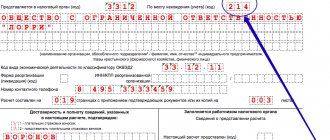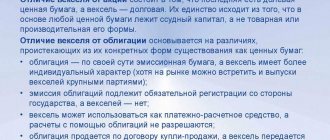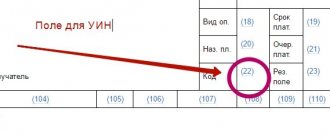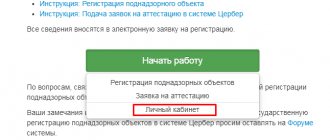Who fills out the TORG-11 form
The product label is filled in at the moment the goods or material assets arrive at the warehouse. Registration is carried out by the person financially responsible for inventory items in the warehouse. Next, the contents of the TORG-11 form are checked by a higher-ranking warehouse employee - manager, senior storekeeper or warehouse worker of another position.
If the indicators of the product label correspond to the actual parameters of the product, the person in question puts a signature, after which the document remains in the place where the valuables are stored. A product label is filled out for each item of product arriving at the warehouse for storage.
Filling
The person responsible for carrying out this work is specified in the job descriptions. In the vast majority of cases, this work is entrusted to a storekeeper or an employee in a similar position.
Is it necessary to fill out a product label?
Since January 2013, filling out this document has ceased to be mandatory for many organizations, since a decree was issued on the abolition of albums of unified forms of primary accounting documentation.
Now the TORG-11 form is only advisory and informational.
However, its use still continues, since regulatory organizations have become accustomed to the previously established forms of papers. If a discrepancy or absence of a document is found, then they require written reasons, documentary evidence and compelling reasons for this.
Attention! If the above is not found, then the organization and the employee will face administrative liability in the form of a fine. Thus, most trading companies and other entrepreneurs prefer to resort to correctly and completely filling out this document for each unit of goods
This is quite convenient when conducting inventory checks.
Thus, most trading companies and other entrepreneurs prefer to resort to correctly and completely filling out this document for each unit of goods. This is quite convenient when conducting inventory checks.
Who fills out and verifies
The storekeeper draws up and makes the necessary changes to the document (although in practice they do not correct it, but simply print out a blank label form and enter the changed data). Control over the completion of each label remains with the head of the organization or individual department. If the company has the position of chief storekeeper, then the responsibility for control can be assigned to him. Each product label must bear the signature of the person who verified the quantity, quality and other characteristics of the product with those indicated in the documents.
In addition to such primary control, a process is required to reconcile information from product labels with the data that was entered into the inventory list.
Possible errors when filling out
Second copies of the label never make up. The financially responsible person writes down the data in a single form, putting a serial number and signature on each completed document.
Important point! The total quantity of the described goods should be recorded in words and not in numbers.
Product labels must be stored in the same place where the values they describe are located. Ideally - in the same cell, on the same shelf, etc.
If a mistake has been made and it is necessary to urgently make changes to the document, then it is allowed to cross out the incorrect data and enter the correct data in the available empty space.
However, next to the correction there must be signatures of financially responsible persons. And not only the one who filled out the paper, but also the one who controlled the filling process (manager, warehouse manager, chief storekeeper).
Only correctly executed product labels can be the basis for drawing up inventory documentation.
Who signs the TORG-11 product label
The label is signed by the persons who filled out the document and checked the correctness of filling out the document, this could be:
- A manager of a warehouse or other place where goods and materials are located (warehouse manager, store manager);
- A warehouse employee, for example, a storekeeper, financially responsible for a given product;
- Accounting representative.
The signature is placed after checking that the materially responsible person has filled out the TORG-11 form for the goods received at the storage location.
The signed product label is not submitted to the accounting department; the document is needed solely for warehouse accounting of inventory items at storage locations, so the verified and signed document remains in the warehouse.
Where is the product label used?
A product label is not a delivery note. TORG-11 should be used in warehouses and other places where goods are stored. The document form is placed next to the product item indicated in it. The completed product label must contain information that allows you to identify the product and facilitate its search during inventory.
The TORG-11 form is convenient to use in the following cases:
- if there are long-term storage goods in the warehouse;
- if each unit of goods has its own article number;
- if the inventory must be carried out in a short time;
- Products with a range of sizes (clothing, shoes) are stored in warehouses.
The product label must be filled out separately for each type of product. The completed document allows you to clearly determine which inventory items are stored in a specific location, which significantly speeds up the search for the desired item.
In practice, a situation is possible when different types of inventory items are stored in one warehouse cell. Then one form TORG-11 can be drawn up for them. It is also possible to create several separate labels for each product item.
The warehouseman draws up the TORG-11 form in a single copy and enters information about each label in the warehouse documents register.
Errors in filling out the product label
The financially responsible person filling out the TORG-11 form must not make mistakes in indicating information about inventory items. It is necessary to provide the most complete information about all items stored on a specific shelf (cell). It is necessary to indicate not only the name, but also detailed individual characteristics of the property (article number, grade, size, etc.).
There should be no errors in indicating quantity and price. The price is determined in accordance with the accompanying documentation, as well as the organization’s procedure for accepting inventory items for accounting. Valuables can be accepted into the warehouse at the purchase price specified by the supplier, or at the selling price, including a trade margin.
Errors in the design of the label will not allow you to correctly fill out the inventory list in the future; therefore, you should carefully fill out the tabular part of the TORG-11 form. The determining factor when filling out the TORG-11 form is the location of the product, so the product label remains in a specific cell (compartment, shelf), therefore, it is allowed to include all the names that are in a given cell in one form.
Since the product label is used when filling out the INV-3 inventory list, the signature of the person who verified the completion of the TORG-11 form is required. By putting his signature, the manager of a warehouse or other storage location confirms that all information is correct, and the volume of inventory items that is reflected in the product label is actually stored in this location.
The label must be signed not only by the employee who checked the correctness of registration, but also by the materially responsible employee who filled out the document. Only if the specified signatures are available, the product label data can be used to fill out inventories when taking inventory of goods and materials.
Product label for UPP 1.3 (TORG-11) - development of external printing form
Preface:
Although UPP 1.3 is not my specialty, I helped a friend of mine, FoxPro, become a 1C programmer, fortunately he has a good material and technical base at hand in the form of a very large enterprise and a stably operating UPP. The task arose to automate processes related more to our own automation, as well as warehouse processes. One of the tasks was the development of a printed form of the product label (TORG-11).
Appearance of processing the printing of a TORG-11 product label for UPP 1.3 (and UT 10.3) with the output of the VPF in a table field (sorry, screenshot from a laptop).
First, what we managed to find from the theory: TORG-11 “Product Label”
Resolution of the State Statistics Committee of the Russian Federation dated December 25, 1998 N 132
It is used to record inventory in places where goods are stored. The product label is filled out in one copy by the financially responsible person for each item, indicating the serial number of the label. The product label is stored together with inventory items at their location.
Product label data is used to fill out an inventory list of inventory items.
In the process of discussing methods for solving the problem, we came to the conclusion that the warehouse employee will fill out the tabular part of this external processing by item groups or single elements, all the minimum characteristics for clarity will be displayed in the required fields (code, registration number, unit of measurement for reports, OKEI code, and the default quantity is one). We will leave additional ones until the situation is clarified. Then the usual printing procedure takes place.
I would like to raise the question of the feasibility and practical application of this TORG-11 printed form for accounting. The legislation describes it very sparsely and, moreover, the impression was created that this VPF is only for the clothing and knitting industry.
We will be happy to listen to everyone who understands the methodology in this area of production accounting of parts and components in a large production.
In conclusion, I checked the functioning of this form and it was free of any errors, launched and worked successfully (including selecting and saving settings for Trade Management 10.3.30 and higher - UPP in these mechanisms did not use specifics related to UT 10.3.
Questions remain: after all, product labels require at least some kind of continuous numbering and there are some ideas to automate all this with documents like invoicing clients in UT 10.3, BP 3.0, UPP 1.3: the paper is printed and (or) sent by email , the document is non-binding, but its “copy” with the date number remains as a document in the database and, if paid, is the beginning of a chain of actions for mutual settlements. They wanted to apply something similar to accounting using this technology.
In terms of implementation technology: this form is quite primitive:
— Simple filling with a request of the tabular part of external processing according to the nomenclature using the “IN HIERARCHY” design according to the catalog of components;
Procedure CommandPanel1KnFillByCatalogue(Button) Request = New Request; Query.Text = "SELECT | Nomenclature.Link AS Nomenclature, | 1 AS Quantity |FROM | Directory. Nomenclature HOW Nomenclature | WHERE | Nomenclature.Link IN HIERARCHY(&Catalog) | AND (NOT Nomenclature.DeletionMark) | AND (NOT Nomenclature.This is a Group) | |ORDER BY | Nomenclature.Name"; Request.SetParameter("Directory", Directory); Product.Load(Request.Execute().Unload()); End of Procedure
— Using the event “OnOutputRow(Element,RowDesign,RowData)” of a regular (thick) form to draw item details (it could also be obtained in a request):
Procedure TableField1WhenOutputRow(Element, RowDesign, RowData) Nom = RowData.Nomenclature; If Not ValueFilled(Nom) ThenRowData.Code = ""; RowData.UnitForReports = ""; DataStrings.CodePoOKEI = ""; Row Data.Article = ""; Return; endIf; RowData.Code = Nom.Code; RowData.UnitForReports = Nom.UnitForReports; If ValueFilled(Nom.UnitForReports) Then Unit = Nom.UnitForReports.UnitByClassifier; If ValueFilled(UnitCode) ThenLineData.CodeByOKEI = UnitCode.Code; endIf; Otherwise, RowData.CodePoOKEI = ""; endIf; Row Data.Article = No.Article; //Line Data.Quantity = Nom. ; //Row Data. = Nom. ; //Row Data. = Nom. ; //Row Data. = Nom. ; //Row Data. = Nom. ; //Row Data. = Nom. ; //Row Data. = Nom. ; //Row Data. = Nom. ; //Row Data. = Nom. ; //Row Data. = Nom. ; //Row Data. = Nom. ; End of Procedure
— saving settings (tested on UPP 1.3), the tabular part of the intermediate selection was saved;
Settings for saving user data.
— Illustration of the output of a spreadsheet document in a table field of the usual form:
Procedure ButtonFormPress(Button) TabField = FormElements.TableField1; TabDoc = FormElements.TabularDocumentField1; TabDoc.Clear(); TabDoc.AutoScale = False; // so that it is 100% TabDoc.Page Orientation = Page Orientation.Landscape; TabDoc.PageSize = "A4"; Quantity = Product.Quantity(); If Count = 0 Then Report("Nothing to print"); Return; ENDIf; Layout = GetLayout("LayoutProductLab"); // Layout name SectionHeader = Layout.GetArea("Header"); SectionHeader.Parameters.Organization = Organization; SectionHeader.Parameters.Division = FormElements.Division.Value; SectionHeader.Parameters.DocumentNumber = FormElements.DocumentNumber.Value; SectionHeader.Parameters.Date of Compilation = Form Elements.Date of Compilation.Value; TabDoc.Output(SectionHeader); SectionNomenclature = Layout.GetArea("Nomenclature"); For each StrTab From Product Cycle Fill inPropertyValues(SectionNomenclature.Parameters, StrTab); SectionNomenclature.parameters.PP = Product.Index(StrTab) + 1; TabDoc.Output(SectionNomenclature); EndCycle; // Basement = Layout.GetArea("Basement"); Total = Layout.GetArea("Total"); QuantityTotal = Product.Total("Quantity"); Total.Parameters.Total = Total; TabDoc.Output(Total); Footer.Parameters.Quantity = ""+NumberIn Words(CountTotal); TabDoc.Output(Basement); End of Procedure
I hope this material will be useful to someone.
Inventory sheets
Control over the safety of valuables and material assets is the key goal of warehouse accounting. To achieve this goal, a special procedure is provided - inventory. In essence, inventory checks are a reconciliation of the actual availability of inventory items with accounting data.
There are several reasons for conducting an inventory:
- Before preparing annual financial statements.
- When changing the financially responsible person.
- If facts of asset theft are detected.
- When transferring assets for rent or safekeeping.
- Upon liquidation of an economic entity.
- In case of natural disasters, fires, floods.
If discrepancies are identified, a warehouse inventory list is drawn up.
What should be on a food label
The label with which I label food products must indicate the name of the product itself, information about the manufacturer, weight, composition and nutritional value (fats, proteins, carbohydrates per 100 grams of product), calorie content in kilocalories, energy value. The appropriate temperature conditions at which the product should be stored are also indicated.
A prerequisite is to indicate the storage period. This designation could be as follows:
- Best before – the exact date must be indicated.
- Sell by – indicates the date by which the store must sell the product.
- Use before – indicates how long the product retains all its beneficial qualities. After this date, the product can be used, however, the product will no longer have the beneficial properties or range of taste.
The packaging must also indicate whether the product requires heat treatment.
As for the name, according to the technical conditions, it must reliably characterize the product so that the buyer understands what he is buying - cheese or a cheese product, yogurt, kefir or kefir product. So, for example, if the package says “cheese”, then the product should not contain vegetable fats; this is inherent only in a cheese product.
4.1 Do not confuse the name and the name of the product on the label
The invented name can be anything, for example, “Homemade cutlets.” The name should look like this: “Semi-finished minced, molded, breaded products made from broiler chicken meat.”
Also, the name cannot indicate components that are not part of the product. If yogurt contains flavoring instead of strawberries, then the product cannot be called “Yoghurt with Strawberries”. The label must state “Strawberry Flavored Yogurt” or “Strawberry Flavored Yogurt.”
The label of meat products must indicate whether the product is chilled or frozen. If the product is made from meat that was previously frozen, then it should be written “made from frozen raw materials.”
4.2 Ingredients on the food label
According to a customer survey, 62% of respondents believe that the most important information is the information about the composition of the product on the label.
All ingredients are indicated in descending order of their mass fraction in the product. For example, if the sausage label says “beef” in the first place, it means that the product should contain the most beef, not chicken or soy. If some components are present in quantities less than 2%, then they can be listed at the end in any order.
Fruits, vegetables, nuts, mushrooms, spices, grains, herbs included in the product, which do not differ in mass fraction, can be indicated in any order, and there must be o.
The composition is not indicated for fresh fruits, vegetables, berries, vinegar from one type of raw material, single-component food products, the name of which makes it possible to determine the presence of this component, for example, flour or eggs.
If there is a compound component, a list of all its ingredients is indicated or the compound component is indicated with an addition to it in parentheses of the ingredients in descending order of their mass fraction. For example, the composition of glazed cheese: cottage cheese, granulated sugar, dark chocolate (cocoa mass, granulated sugar, cocoa butter, emulsifier - soy lecithin, natural vanilla), butter.
To protect consumers from abuses by product manufacturers in Russia, strict requirements have been developed. In order to unify many regulatory and legislative documents regarding food products and requirements for information on the label, GOST R 51074-2013 was developed.
This GOST allows you to protect consumers from the penetration of low-quality goods into the market. At the same time, it contains requirements for labels on goods:
- Information about food products (including imported ones) must be in Russian;
- The name of the product must be indicated;
- composition of the product;
- its nutritional value;
- product manufacturer;
- country of manufacture of the product (or country of origin);
- manufacturer's trademark;
- net weight, volume or quantity of product;
- storage conditions;
- shelf life of the product;
- Designation of a state standard or enterprise standard (Technical conditions for Russian manufacturers) or other regulatory document in accordance with which the product is manufactured; information about mandatory and voluntary certification (in the form of a graphic image established by law, or in the form of text).
- If the product is subject to mandatory certification
, then the label must contain a mark on the certification, the certificate number, its validity period, and the body that issued it (Resolution of the State Committee of the Russian Federation for Standardization, Metrology and Certification dated August 5, 1997 No. 17). Mandatory labeling requirements are also established for imported goods, which are prohibited from being sold without information about them in Russian.
Requirements on the label for food products provide for a mandatory indication of the use in the preparation or content of the following substances:
- biologically active food additives (BAA);
- flavorings;
- food coloring;
- taste improvers;
- food products of non-traditional composition;
- products containing unusual protein components;
- about the presence of genetically modified substances or components.
The technical regulations of the Russian Federation also contain requirements related to labels of specific groups of goods and the identification of products depending on their composition. For example, technical regulations made it possible to divide dairy products present on the Russian food market into dairy and milk-containing products. Also, according to this document, it is mandatory to indicate on the label the presence of powdered milk in the product.
4.3 What is required and what is not required to be included in the product
The following components present in the product in any quantities must be indicated on the label: peanuts, aspartame (artificial sweetener), mustard, sulfur dioxide (sulfite), if 10 mg/kg (l), cereals containing gluten or gluten itself, sesame , lupine, shellfish, crustaceans, fish, milk (lactose), nuts, celery, soybeans, eggs and their products.
This requirement is due to the fact that these components can act as strong allergens. Therefore, even if these components are not present in a particular product, but at the same time they are used in production, the label must contain the following inscription: “May contain traces of nuts, grains, and dairy products.”
The following substances are not included in the composition:
- Substances that are part of one or more components and do not change the properties of food products containing such components;
- Technological aids
- Solvents in flavorings or food additives
- Water, if it is used to reconstitute concentrated, condensed or dry food products, or is part of a liquid component specified in the composition of the food product.
4.4 Flavorings printed on the label
The name of the aromatic component must contain the word “flavor” itself, a flavoring substance or a flavoring preparation, a smoke flavoring (liquid smoke), a thermal technological flavoring, a flavoring precursor. Flavors can be natural, identical to natural or artificial.
The word “natural” is indicated only for those flavorings whose initial ingredients are substances obtained from natural derivatives (for example, vanilla pods, cinnamon sticks, saffron, extract from crustacean shells).
4.5 Special notices and warnings
There are several food additives, the presence of which must be warned to the consumer.
According to studies, the consumption of products containing dyes and sweeteners (such as aspartame), as well as caffeine, causes ADHD (attention deficit hyperactivity disorder) in children. Therefore, the label of such products must include the following statement: “Contains colorant(s) and sweetener(s), which may have a negative effect on the activity and attention of children.”
According to clause 7 of part 4.4 of the technical regulations of the Customs Union “Food products regarding their labeling” (TR CU 022/2011), the composition may not be indicated in the labeling of food products consisting of one component, provided that the name of the food product makes it possible to establish the presence this component.
4.6 Quantity printed on label
The quantity of product can be indicated in liters (ml), grams (kg) or in pieces. The weight or volume of eggs, as well as fruits and vegetables sold individually, may not be indicated.
If the product is placed in a liquid (for example, brine), the label must indicate the weight (gross) of the product with the liquid, and the weight (net) of the product itself. For example, mozzarella cheese is sold in water or brine. The label indicates the number of cheese balls, the mass of each of them and the total mass of the product including liquid.
4.7 Date of manufacture and expiration date on the label
The date of manufacture must be indicated in the format HH.DD.MM if the product's shelf life is up to 72 hours (this is how dates are indicated on the labels of bread and cottage cheese); in the format DD.MM.YYYY, if the expiration date is from 72 hours to 3 months; MM.YYYY with a shelf life of 3 months or more; YYYY - for sugar.
The expiration date is indicated in the same format in the form of the inscription “best before” or indicating the expiration date in hours, days, months, years, respectively.
On the label we can find two types of designation: shelf life (best before, shelf life) and expiration date (use by date, exp. date).
What is the difference between the shelf life and the expiration date on a food label? Let's take a closer look.
Shelf life (best before) is the period of time during which the product retains its properties, primarily taste. As a rule, this marking is affixed to canned, frozen, and dry products. It can also mean the period during which the beneficial qualities of the product are preserved (for example, live bacteria in yogurt).
Shelf life (use by date) is the period of time during which a product remains safe when stored under proper conditions. This labeling usually applies to dairy products, finished products, salads, cooking, etc. Thus, most products with a specified shelf life are safe to eat after this period (although they may lose taste), which cannot be said about perishable products - after When the expiration date expires, the product becomes hazardous to health and should not be consumed.
4.8 Manufacturer or production address on the label
If the production is located in one place, and the company (legal entity) is officially registered in another, both addresses must be indicated on the label.
For imported goods, it is mandatory to indicate the name and location of the importer. The name and address of the manufacturer can be written in the language of the country of origin, only the name of the country must be written in Russian.
If a product of the same brand is manufactured in different factories, it is necessary to clearly indicate exactly where the product was produced using letters, numbers, symbols, or highlighting in a different font.
The use of abbreviations is not regulated by regulations. In our opinion, it is quite acceptable to use abbreviations if they are commonly used.
4.9 Nutrition facts on the label
The energy value must be indicated in both kilocalories (kcal) and kilojoules (kJ). Proteins, fats, carbohydrates, minerals and vitamins are indicated in grams (mg, mcg) per 100 g (or per 100 ml).
If the content of proteins, fats or carbohydrates in a product is no more than 2% of the average daily requirement of an adult for these substances, their quantity is not indicated on the label.
If minerals or vitamins have been added to the product, they must be indicated on the label.
The content of minerals and vitamins of natural origin contained in 100 g of a product or one serving may be indicated if it is 5% of the average daily requirement of an adult for a vitamin or mineral.
For children and other special categories of consumers (for example, for patients with diabetes), percentages (2% or 5%) are calculated and indicated based on the norms of needs for this category.
The percentage of the daily requirement must be indicated for biologically active additives (BAA) and fortified products - in relation to the substances of which they are a source.
For raw and semi-finished products, the nutritional value is indicated as is, without taking into account further preparation of these products.
Nutritional value of flavors, chewing gum, coffee, natural mineral water, bottled drinking water, food additives, raw food products (mushrooms, meat and poultry, fish, vegetables (including potatoes), fruits (including berries), table salt, spices , spices, vinegar, tea may not be indicated.
4.10 What type of labeling should be used?
The marking should be:
- Clear, easy to read, reliable and in no case mislead the consumer
- Information must be printed using inscriptions and symbols that contrast with the background of the marking itself.
- The information is also applied with paints or in a way that guarantees its safety throughout the entire period of use.
The name of the product, expiration date, storage conditions, components that can cause an allergic reaction must be applied directly to the consumer packaging or on a label that is difficult to remove from the packaging. The remaining information can be placed on any label or leaflet (except for components that can cause an allergic reaction).
Document flow in the warehouse
Let's present warehouse document flow for dummies in the form of a table with explanations for each form. All unified forms can be downloaded for use. It is not necessary to use the forms; the organization has the right to develop its own templates. Here is a list of the main warehouse documents:
| Stage of inventory accounting in warehouses | Samples of warehouse documents | Recommendations for filling |
| Admission | TORG-12 | Filled out when purchasing material assets from a supplier. They are invoices containing detailed information about incoming goods and materials. Since the documents come from external sources, the supplier (seller, transferring party) is responsible for filling out the forms. |
| M-15 | ||
| M-4 | The receipt order is filled out by the person responsible for maintaining warehouse records. It is possible to refuse to fill out the M-4, replacing the form with a special stamp. A receipt stamp is affixed to invoices. The structure of the stamp must include all the mandatory M-4 details. | |
| TORG-2 | This is an act of discrepancy. It is required to be drawn up if the actual volume, characteristics or quality of the delivery differs from the stated items in the invoice. | |
| Sales receipt or invoice | Used when purchasing goods and materials through accountable persons. As of July 1, 2019, the reporting rules have changed. Now it is impossible to accept materials only using an invoice or sales receipt. A fiscal receipt is required. | |
| Certificates, acts, statements and other forms Sample warehouse certificate | Used for other methods of receipt of goods and materials. For example, in case of a gratuitous transfer, you will have to prepare an acceptance certificate. Or use another document provided for in the accounting policy. For example, a warehouse certificate of balances in free form will be required when reconciling balances with accounting. | |
| Actual accounting | Party card MX-10 | It is used provided that the organization carries out a batch method of accounting for inventory items. That is, each batch of goods is stored separately. A batch card is created for each delivery. A batch is homogeneous goods, valuables, materials that arrived at the institution using one primary document. The party card form is developed by the company independently. |
| Material accounting card M-17 | This accounting method is called varietal accounting. A card is issued for each inventory item. In this case, accounting is carried out by types of materials, grades, names. Moreover, regardless of the date and volume of delivery. | |
| Internal movement | M-11 | A demand invoice is issued when it is necessary to transfer goods and materials from one financially responsible person to another. For example, when transferring materials between warehouses or structural divisions of an institution. M-11 is filled out by the responsible employee of the sending party. 2 copies are made. The first is stored at the place of disposal of the asset, the second - at the place of registration upon receipt. |
| Inventory | Inventory order (INV-22) | A local administrative act is the basis for carrying out control measures. The order should indicate:
All interested parties must be familiar with the completed order. |
| Inventory list (INV-3) | This is the actual availability of assets and inventory items in the enterprise's warehouse. That is, the authorized commission records data in the inventory in accordance with actual indicators and volumes of inventory items. Inventory can be carried out only in the presence of financially responsible persons (Order of the Ministry of Finance of the Russian Federation dated June 13, 1995 No. 49). | |
| Collation statement (INV-19) | One of the designated statements is filled out if there are discrepancies between actual and accounting data. If accounting and warehouse accounting do not coincide, then the discrepancy is recorded in the document. Specify which document will be used in your work in your accounting policy. | |
| Statement of results identified by inventory (INV-26) | ||
| Storage | MX-1 | When receiving materials for storage, the responsible person fills out an acceptance certificate for goods and materials according to form MX-1. It records information about assets transferred for safekeeping to the warehouse. |
| MX-2 | Upon expiration of the storage period or at the request of the transferring party, MOL returns the goods. An act of return of goods and materials is drawn up in form MX-2. | |
| Disposal | Limit fence card (M-8) | It is used when writing off materials for production or for transferring assets to third parties. It is started only for one item and for one reporting month. At the end of the reporting period, it is transferred to the accounting department. |
| Invoice for outsourcing of materials (M-15) | Filled in when goods or materials are released externally. Rarely used, in most cases the M-15 form is used. | |
| Request-invoice (M-11) | Issued once. That is, one release of goods and materials - one document. Prepare two copies for each side at once. | |
| Packing list (TORG-12) | Used when selling goods. If goods are shipped to customers through transport companies, then a consignment note should also be issued. |
Sample document:
Unified form N TORG-11
Approved by Resolution of the State Statistics Committee of Russia dated December 25, 1998 N 132
———- ¦ Code ¦ +———+ Form according to OKUD ¦0330211 ¦ +———+ ___________________________________________________ according to OKPO ¦ ¦ organization, address +———+ ____________________________________________________________¦ ¦ structural unit +———+ Type of activity according to OKDP ¦ ¦ +———+ Type of transaction ¦ ¦ +——T—+ Inventory date ¦ ¦ ¦ ¦ —+—+— ———————— ¦ Number ¦ Date ¦ “document” of preparation¦ +——— +————+ PRODUCT LABEL ¦ ¦ ¦ ———-+———— ——————————————————————————— ¦ Product ¦ Unit ¦Arti-¦Gord¦Raz-¦ Completeness, model, ¦Co- ¦Accounting-¦ +—————-+ measurements ¦kul ¦ ¦measurement,¦ color and type of top, ¦li- ¦name ¦ ¦name¦ code+————+to- ¦ ¦height¦ article of fabric ¦chest-¦price,¦ ¦ ¦name-¦code ¦vara ¦ ¦ ¦ (pads), style ¦yours ¦rub. ¦ ¦ ¦ ¦nova- ¦ by ¦ ¦ ¦ +——T——T——T—+ ¦kop. ¦ ¦ ¦ ¦nie ¦OKEY¦ ¦ ¦ ¦ ¦ ¦ ¦ ¦ ¦ ¦ ¦ ¦ ¦ +————+—+——+—-+——+—-+—-+—+—+—+— +—+—+—+—-+——+ 1 2 3 4 5 6 7 8 9 10 11 12 13 14 15 16 +——— —+—+——+—-+——+—-+—-+—+—+—+—+—+—+—+—-+——+ ¦ ¦ ¦ ¦ ¦ ¦ ¦ ¦ ¦ ¦ ¦ ¦ ¦ ¦ ¦ ¦ ¦ +————+—+——+—-+——+—-+—-+—+—+—+—+—+—+—+—-+——+ ¦ ¦ ¦ ¦ ¦ ¦ ¦ ¦ ¦ ¦ ¦ ¦ ¦ ¦ ¦ ¦ ¦ +————+—+——+—-+——+—-+—-+—+—+—+—+—+— +—+—-+——+ ¦ ¦ ¦ ¦ ¦ ¦ ¦ ¦ ¦ ¦ ¦ ¦ ¦ ¦ ¦ ¦ ¦ +————+—+——+—-+——+—-+—-+— +—+—+—+—+—+—+—-+——+ ¦ ¦ ¦ ¦ ¦and ¦ ¦ ¦ ¦ ¦ ¦ ¦ ¦ ¦ ¦ ¦ ¦ ¦ ¦ ¦ ¦ etc. ¦ ¦ ¦ ¦ ¦ ¦ ¦ ¦ ¦ ¦ ¦ ¦ ¦ ¦ ¦ ¦ ¦ ¦ ¦ ¦ ¦ ¦ ¦ ¦ ¦ ¦ ¦ ¦ ¦ ¦ ¦ ¦ ¦ ¦ ¦ ¦ ¦ ¦ ¦ ¦ ¦ ¦ ¦ ¦ ¦ ¦ ¦ ¦ ¦ ¦ ¦ ¦ ¦ ¦ ¦ ¦ ¦ ¦ ¦ ¦ ¦ ¦ ¦ ¦ ¦ ¦ ¦ ¦ ¦ ¦ ¦ ¦ ¦ ¦ ¦ ¦ ¦ ¦ ¦ ¦ ¦ ¦ ¦ ¦ ¦ ¦ ¦ ¦ ¦ ¦ ¦ ¦ ¦ ¦ ¦ ¦ ¦ ¦ ¦ ¦ ¦ ¦ ¦ ¦ ¦ ¦ ¦ ¦ ¦ ¦ ¦ ¦ ¦ ¦ ¦ ¦ ¦ ¦ ¦ ¦ ¦ ¦ ¦ ¦ ¦ ¦ ¦ ¦ ¦ ¦ ¦ ¦ ¦ ¦ ¦ ¦ ¦ ¦ ¦ ¦ ¦ ¦ ¦ ¦ ¦ ¦ ¦ ¦ ¦ ¦ ¦ ¦ ¦ ¦ ¦ ¦ ¦ ¦ ¦ ¦ ¦ ¦ ¦ ¦ ¦ ¦ ¦ ¦ ¦ ¦ ¦ ¦ ¦ ¦ ¦ ¦ ¦ ¦ ¦ ¦ ¦ ¦ ¦ ¦ ¦ ¦ ¦ ¦ ¦ ¦ ¦ ¦ ¦ ¦ ¦ — ———-+—+——+—-+——+—-+—-+—+—+—+—+—+—+—+—-+—— Total ¦ ¦ —— Quantity of goods _______________________ in words The product according to the label has been checked by: Head of the structural unit _________________ _________ ___________________________ position signature, transcript of the signature _________________ _________ ___________________________ position, signature, transcript of the signature







